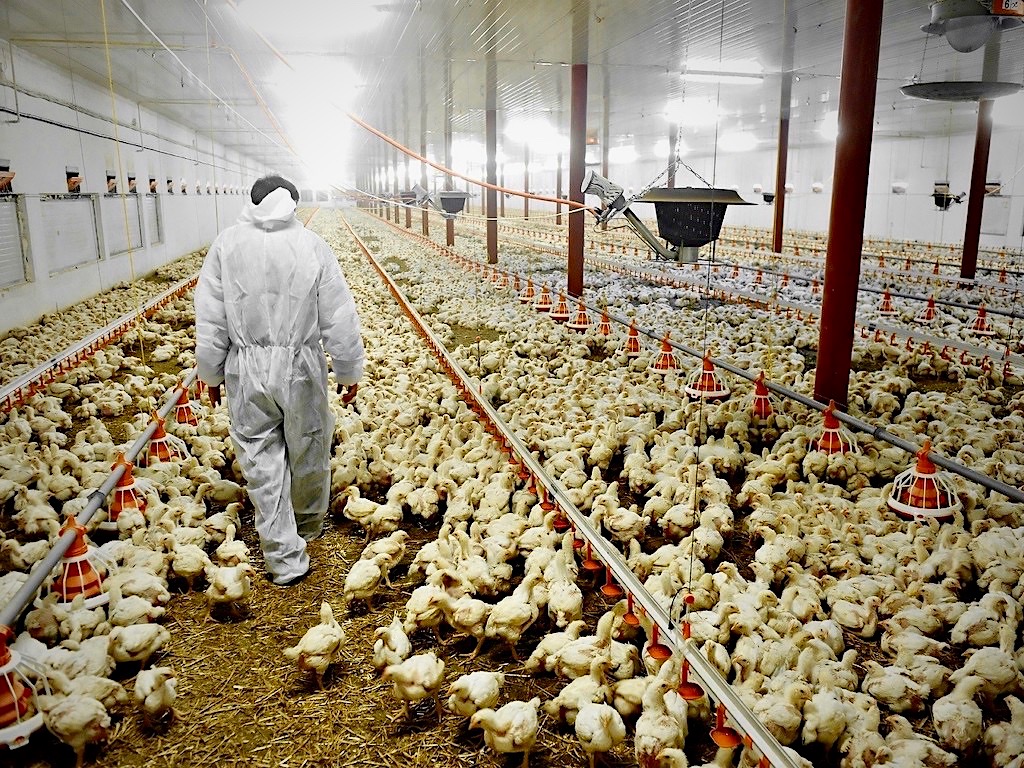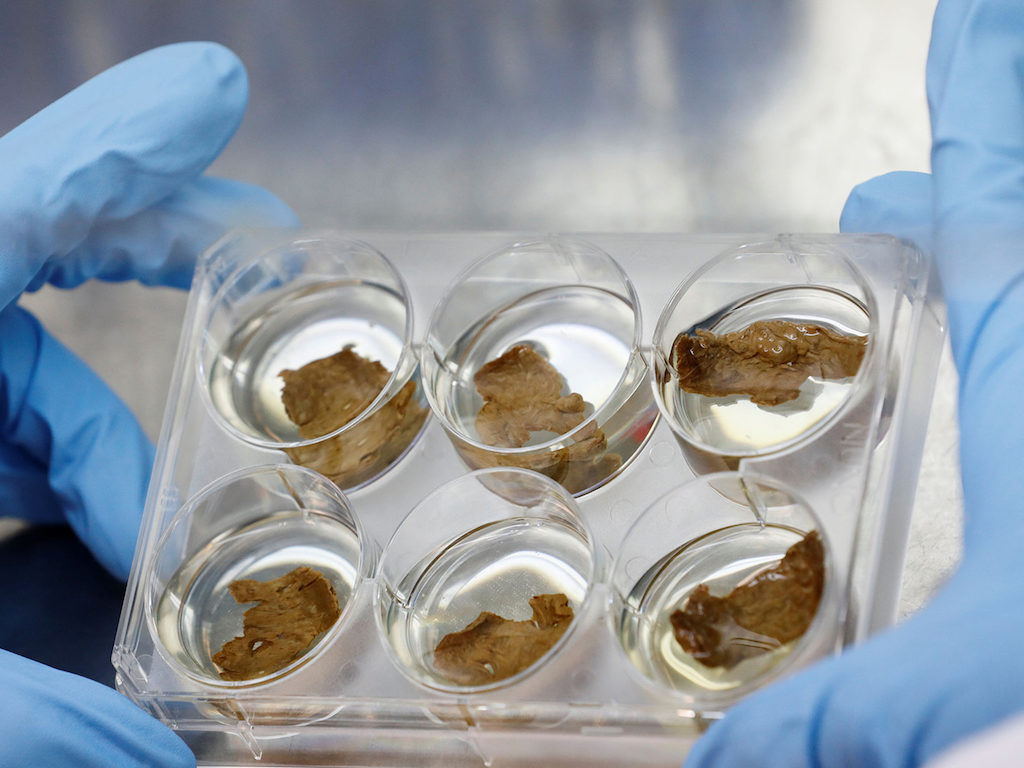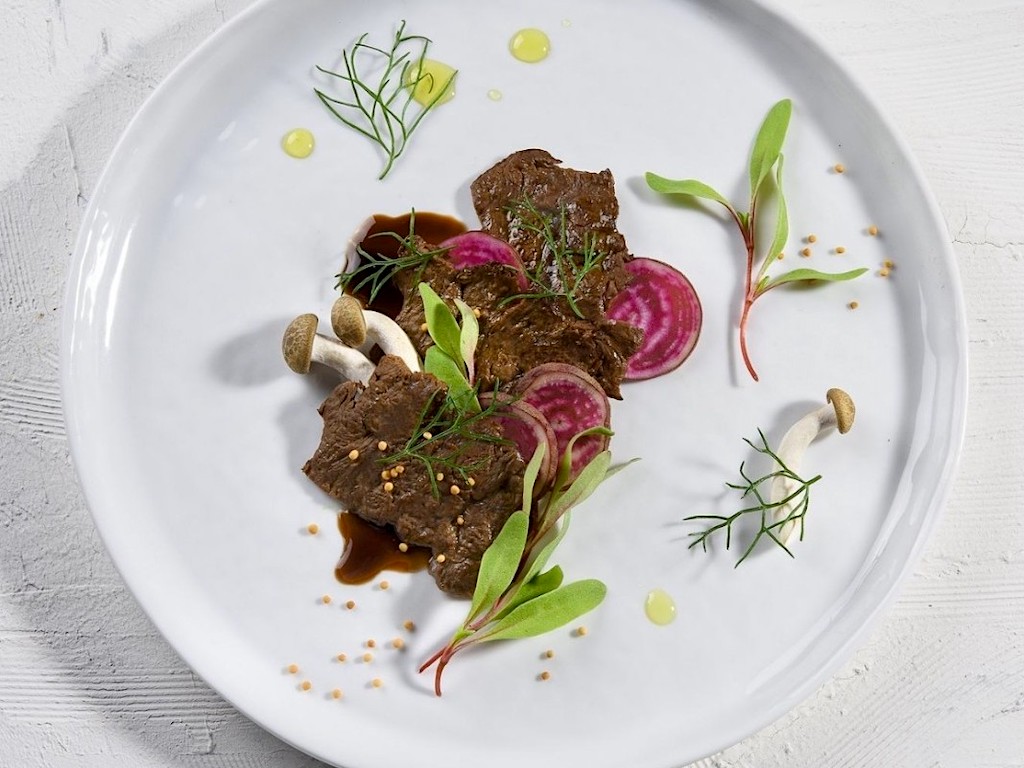8 Mins Read
Lab-grown, cultured, cell-based – all these terms refer to cultivated meat, whereby animal flesh or byproducts are produced without any animal killing. And no, we aren’t talking about plant-based alternatives such as Beyond Meat or Omnipork. We’re talking about actual animal flesh grown inside bioreactors using cellular agriculture and tissue engineering instead of traditional animal livestock farming methods. For some, this might feel like science fiction, but dozens of companies (including a fair few in Asia) are already working to bring this technology to market within a couple of years so it’s time to get educated about this new sector of food technology. Here’s a rundown of reasons why food scientists and environmentalists are bullish on cultivated meat and its potential to bring about a healthier, safer and more sustainable food system.
1. It’s slaughter-free
Growing meat from cells means that no animal needs to be slaughtered to end up on your plate as a meal. Every year, around 70 billion animals are reared for food, the majority of which are in industrial farms where they live in cramped, dirty and inhumane conditions. Every day, 5 million animals are exposed to cruelty and added risks in transit to new countries via land and sea journeys that can span weeks. Whether they are funnelled into the global live animal trade or slaughtered locally, animals reared for food have to face a violent end to their lives.
Cultivated meat does not require the slaughter of animals, it is instead grown in laboratories using cells taken from an animal, using a small biopsy done under anaesthesia, and does not subject the animal to cruelty or violence, though it does mean that it is not suitable for vegans as it is still an animal-derived product. And cells from a single cow can produce as many as 175 million quarter pounders – far more than the 440,000 cows needed using traditional farming methods to produce the same amount.
2. It’s hormone-free
Given that it is grown in a clean laboratory environment, cultivated meats are also free from any artificial growth hormones that are typically used in the conventional meat industry to make livestock grow and gain weight faster. Synthetic oestrogen and testosterone are the most common hormones used in livestock and in dairy cows, and while industry-funded studies show no risk, there are independent studies that suggest a link between injected hormones and cancer. Since they don’t require any hormones, lab-grown versions are therefore safer for human consumption and do not come at the added hormone-related risks.
3. It’s antibiotic-free
All cultivated meats are produced in a sterile environment, which means that they do not require antibiotics either. Slaughterhouses are the opposite – industrial animal farms pack livestock into cramped, dirty conditions that are hotbeds for contamination. Some cases have led to foodborne illnesses amongst consumers, more serious outbreaks of diseases have created mass chaos such as the recent African swine fever that wiped out pork supplies across Asia and multiple avian influenza outbreaks that have affected chickens and other birds in the past years.
As the demand for meat continues to grow globally, so has the use of antibiotics in the animal meat industry. The overuse of antibiotics to prevent animals from getting sick is so rampant in the industry that to date, over 80% of all produced antibiotics is sold to livestock farms, according to the FDA. Experts have long warned that this is leading to the rise of antibiotic resistant superbugs, with a 2019 study a tripling of the occurrence of antibiotic resistance in disease-causing bacteria in livestock between 2000 and 2018.

4. It supports local food production
Because cultivated meat facilities and bioreactors can be built virtually everywhere, it means that meat does not need to be transported from one continent to another. Grown indoors in controlled lab environments, it means that outdoor weather, temperature, land availability are all factors that are unimportant when it comes to this alternative source of protein, providing stable income to local communities and ensuring a resilient supply of protein, not to mention the big savings on transport emissions.
5. It bolsters food security
One major thing that the coronavirus pandemic exposed is the vulnerability of our global food supply chains. With lockdowns, travel bans and export restrictions to curb the spread of the virus came a massive supply shock of many staple foods, from wheat flour to fresh produce and of course, meat.
The United States, in particular, faced a meat shortage, with slaughterhouses shuttered due to a number of outbreaks and meat producers having to cull and “dispose” of millions of animals as a result. In China, imports of premium meat and dairy virtually disappeared from shelves.
Food security is top of mind for many countries that are now exposed to the supply chain breakdown from coronavirus and are vulnerable to the climate crisis. Singapore, for instance, launched a SDG 30 million (US$21 million) fund dedicated to bolster local food production to provide a buffer in event of food supply shocks, with a great portion of the money going to support cultivated food techs that can produce local meat and seafood.
In addition to boosting self-sufficiency, locally grown meat will also slash carbon emissions from reducing transportation routes.
6. It requires far fewer carbon emissions (up to 96%)
On the topic of carbon emissions, cultivated protein also contributes a fraction of greenhouse gas emissions compared to conventional meat. According to the United Nations FAO, animal agriculture alone generates 18% of global greenhouse gases – making it one of the leading causes of the climate crisis. It isn’t just the enormous resources that make raising livestock so carbon-hefty, but the methane emissions due to cows and their manure, which is anywhere from 20 to 30 times more potent and heat-trapping than carbon dioxide.

By contrast, cultivated meats can produce up to 96% fewer greenhouse gas emissions. While growing meat in labs will require significant amounts of energy, one study from the University of Oxford found that if facilities were powered by clean energy rather than fossil fuels, there are clear climate benefits to be reaped.
7. It requires a lot less land
Cultivated meat requires less land to produce. The world already uses the majority of arable farmland for livestock rearing – yet meat demand continues to rise due to rapid urbanisation and population growth. By 2050, we could be looking at a global population of 10 million, with demand for protein anywhere from 70% to 100% higher than today’s levels, according to the United Nations FAO.
Farmers are already being pushed to deliberately set forest fires, causing mass deforestation of rainforests, for more land to farm animals. Last year, large parts of the Amazon rainforest – one of the planet’s few remaining carbon-absorption tools against global heating – had been cleared to raise cows. In turn, this has led to mass loss of biodiversity, with estimates saying we could be losing 50,000 plant, animal and insect species every single year.
Performed in a closed system in indoor labs, it is projected that cultured meat production will use up to 99% less land than the current animal agriculture.
8. It’s feed-free
Another reason why animal agriculture uses vast amounts of land is feed cultivation. Cattle pasture is usually replaced by soy cultivation in order to grow enough feed for livestock. Recent deforestation in Brazil was fuelled by a cycle of soy-cattle-pasture-deforestation cycle that stimulated the need for further land clearing. It’s also happening in other neighbouring countries, including northern Bolivia, Argentina and Paraguay. With more and more rainforest being lost, the hope of keeping global heating at manageable levels is becoming less likely – unless we change the way meat is produced. When both livestock feed and grazing is accounted for, traditional meat production takes up almost half (45%) of the world’s total arable land.

9. It saves a lot of water (compared to traditional ag)
Cultivated meat requires far less water to manufacture. Water scarcity is already a global issue, with the World Resources Institute (WRI) finding that a quarter of the world’s population across 17 countries are already suffering from extreme levels of high water stress due to the climate crisis and water contamination. Scientists doubled down on the warnings of water scarcity in 2020, with experts from the United Nations finding that poor water infrastructure is putting countries at a bigger health risk than the coronavirus pandemic.
In the UN report, the scientists said that water efficiency could be significantly improved if current agricultural farming methods changed. Using conventional animal farming, a single quarter pounder beef patty requires 5900 litres of water to produce – cultivated protein, by comparison, could reduce this by a whopping 96 percent.
To add to the issue of water usage, traditional animal livestock farming pollutes waterways too – runoff from pesticides and fertilisers can also flow into waterways, reaching oceans to harm marine ecosystems.
10. It’s cheaper
While cultured meat companies will still need to overcome a few technological and regulatory hurdles before large-scale production can be achieved, most industry experts do believe that it will reach price parity or even undercut the price of conventionally produced meats. Dutch food tech Mosa Meat, for instance, managed to produce a small scale burger back in 2013 for US$280,000, but believe that within the next two years, as the technology matures and production scales up, the cost of a lab-grown hamburger is projected to be as low as US$10. Upside Foods, another food tech company based in California, is hoping to lower the cost of a single lab-grown burger patty down to US$5 within the next couple of years, while Israel-based Future Meat Technologies believes that they can reduce the cost to an impressive $2.30 to $4.50 by the end of the decade. Once the price becomes accessible and achieves parity with industrially reared meat (whose costs are predicted to rise over the next few years), it’s all systems go the ultimate in cruelty-free animal protein.
Lead image courtesy of Aleph Farms.




